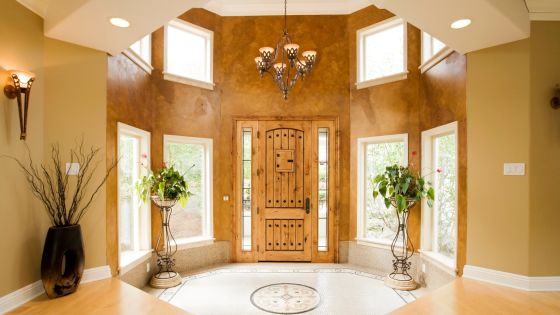Opening the Door to Impressions
From the moment we set our eyes on a building, our minds start forming opinions and impressions. Architecture, like a piece of art, speaks to us, evoking feelings and emotions that can range from awe to tranquility, and everything in between. An essential part of this architectural communication happens right at the entryway. Let’s step behind the entryway and understand the profound impact first impressions have in architecture.

The Silent Communication of Interior Doors
Within the design of a building, every element holds significance, from the towering facade to the humble interior doors. They may seem like mere functional features, but in reality, they play a vital role in the overall aesthetic and atmosphere of a building. These doors serve as gateways between different spaces, subtly influencing our perceptions and experiences. They can set the tone for the room that lies behind them and contribute to the overall impression of the architectural design.
The Role of the Entryway in Architectural Design
The entryway serves as a transition point, a space that bridges the outside world with the interior of a building. Architects often design this space to provide a ‘sneak peek’ into what lies beyond. They can use design elements like scale, lighting, and materials to create a certain mood or highlight the building’s unique features. For example, a grand, ornately designed entryway can signify luxury and opulence, while a minimalistic, brightly lit entryway can suggest modernity and simplicity.
Creating Lasting Impressions
First impressions are lasting impressions, and in architecture, these impressions often determine how a person interacts with and feels about a building. A well-designed entryway can draw people in, making them eager to explore the building further. It can also give a sense of the building’s character and purpose. For example, a library’s entrance might be designed to invoke a sense of tranquility and reverence for knowledge, while a shopping mall’s entryway might be dynamic and inviting, reflecting the lively atmosphere within.
The Impact on User Experience
Beyond aesthetics, the design of an entryway also significantly influences the user experience. It should be easily accessible and navigable, providing a smooth transition from the outside to the inside. This can involve elements like sufficient lighting, clear signage, and consideration for people with different abilities. By prioritizing user experience in the design of the entryway, architects ensure that the building is not just visually pleasing but also comfortable and functional to use.
Entryways and Cultural Significance
In many cultures, the entryway holds symbolic significance and is often designed to reflect these cultural values. For instance, in FengShui, the entryway is considered the mouth of chi (life energy), and its design can influence the flow of energy and fortune within the building. This cultural context can add a layer of meaning to the design of entryways, making them integral to the identity of the building.
As we have journeyed behind the entryway, it’s clear to see the profound impact first impressions have in architecture. From the silent communication of interior doors to the grandeur or simplicity of the entryway, every detail works together to create an initial impression that can influence our perceptions, experiences, and interactions with the building. As much as architecture is about creating beautiful structures, it’s also about creating meaningful and memorable experiences. And more often than not, these experiences start right at the entryway!
